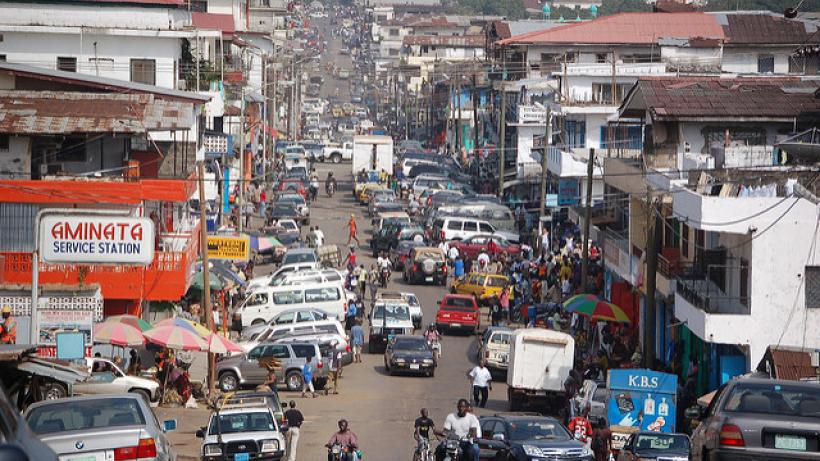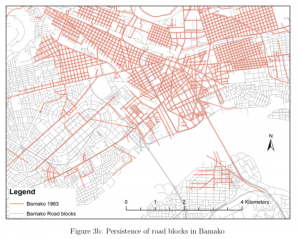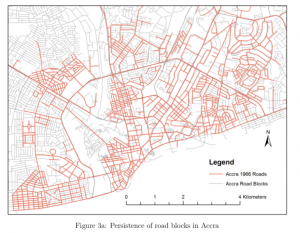
Making room for Africa’s urban billion
By 2050, more than a billion people will be living in African cities and towns. As more and more of the continent’s population – 60% of whom live in the countryside – move to urban areas, pressures on land can only intensify. How should we make room for this massive urban expansion? How will city structures have to change to accommodate Africa’s urban billion? And could well-directed policy help spring African cities out of the low-development trap? These questions were at the core of discussions at the World Bank’s 5th Urbanisation and Poverty Reduction research conference on 6 September 2018.
Cities on the brink
Rapid urbanisation is pushing countless African cities to their limits – many are simply running out of space. As infrastructure struggles to keep apace of a mushrooming populace, policymakers will have to rethink their approach to the use and distribution of land. Lagos is but one of the latest cities undergoing an ambitious redesign of its urban environment. In 2017, the city launched the Eko-Atlantic regeneration project. With aims of reclaiming a land mass the size of Manhattan off the coast, the new planned city hopes to house more than 200,000 new residents and 150,000 workers, reflecting the government’s vaulting ambitions to manage relentless urban growth.
Such radical changes are part and parcel of a wider ongoing phenomenon in African cities – the lack of controlled densification and the prevalence of urban sprawl. It’s expected that even with density levels remaining the same, by 2050, urban land cover in Africa will be four times higher than it was in 2000 (Angel et al. 2011). Should density levels decline, Africa’s total urban area could increase by more than a factor of 12, placing tremendous strains on the continent’s economic, social, political, and environmental health.
When the city loses its walls, the city ceases to be
Economists tend to advocate compact living and the containment of urban sprawl, but why does density and the spatial organisation of cities really matter? The answer is that how cities shape and sprawl closely affects how we live. It affects us in countless ways:
- How we access jobs and economic markets.
- How we communicate and interact with one another
- How much time we spend commuting
- How much we pollute.
When cities are well planned and compactly organised, it’s much easier to seize the positive agglomeration aspects of urbanisation whilst also lowering the costs of providing essential infrastructure and services.
When we think about the spatial development of Western countries, the efficient cities are those characterised by high-density developments, that are close to the city centre, and anchored by strong transportation networks and formal property markets. These are the foundations for highly attractive and productive spaces where people can live, work, and think together.
On the other hand, many African cities are spatially dispersed, with neighbourhoods that are undermined by a combination of weak infrastructure and dysfunctional markets, leaving vast populations isolated from social and economic life. Recent evidence suggests that the average African city is 20% more fragmented than cities in Asia, 29% more expensive, and has 37% less exposure to people and jobs (Lall et al. 2017). These challenges are often a symptom of wider land policy failures, both past and present, which lock cities into informality and a low-development trap.
Two features of Africa’s urbanisation challenge: Low-density and leapfrog development
At the conference, Jan Brueckner presented on Backyarding, a semi-formal means of densification that has proliferated through much of South Africa in response to planning regulations set up during the apartheid era (Brueckner et al. 2018). Across major cities, millions of homeowners – mostly those living in government subsidised properties – are choosing to rent out portions of their yards to occupants living there in self-constructed or formally built dwellings.
Since past government housing was done at extremely low-density, residents have seized the opportunity for infill development on their surplus lot space, generating new housing outside standard planning regulations. According to Statistics South Africa, the number of households living in either formal or informal dwellings in backyards has increased from 1.135 million in 2011 (7.3% of the country total), to 1.835 million in 2016 (12.5% of the total).
A key question is whether town and planning regulations will eventually recognise these market driven means of densification. In Los Angeles, for instance, government officials are encouraging residents to use Backyarding as a tool to house the homeless in so-called “granny flats”. As part of the programme, homeowners could be awarded $75,000 to build a granny flat on their land, or $50,000 for renovations of existing units. One major advantage of course, is that by sharing external services, such as water and sanitation facilities, access to services is significantly better than in alternative options like slums.
In another session, Vernon Henderson showed the distorting effects that colonial hangovers have had on the structure of African cities (Henderson et al. 2017). Studying the differences between cities under Anglophone rule versus Francophone, he showed that Anglophone cities have more leapfrog development at the city margin as well as less intense land use and more irregular layouts in the colonial portions of the city.
The figure below compares the road layout of colonial sections of Accra versus Bamako both in the 1960s and today. Both cities have very similar layouts today as they did nearly 70 years ago, but Bamako appears to have denser, grid-like structures with sections of the city well-connected to arterial roads, while Accra has a much lower degree of rectangularity and much fewer lineal connecting roads. Note that for the same map scale, we see much more of the city in Bamako than in sprawling Accra. Henderson shows that this is a feature of Anglophone cities, which tend to sprawl compared to Francophone ones largely because under British rule, colonial and native sections were left to develop without an overall plan and coordination. Whereas, integrated city planning and land allocation mechanisms were a key feature of French colonial rule.


New plans for African cities
Land use regulations, building standards, and zoning are all tools with tremendous power to bring people into cities or keep them out instead. Too often in African cities, developers and everyday citizens are side-lined to the outskirts where looser restrictions coupled with ambiguities over jurisdictional responsibilities, make development much easier and affordable.
One question is whether African cities can and should aspire to a western model of spatial development, or whether they should work towards incremental changes, developing existing strengths and moving towards some means of semi-formal development that encourages greater density. Land policy and spatial planning have a critical role to play in this process, ultimately determining how cities will densify and expand as they grow.
In the city centres, land policy needs to be adaptable and consistently readjusted to provide guiding principles on urban renewal and regeneration that promotes suitable means of densification. At the outskirts, where we see concerning trends of urban sprawl and encroachment into peri-urban and rural lands, local communities should also have a strong role to play to ensure expansion is sustainable and land is clearly defined and demarcated to support the growth of the local community.
Editor’s Note: The blog was first published on the World Bank blog
References:
Angel, S (2011) Making room for a planet of cities. Policy Focus Report, Lincoln Institute of Land Policy, Cambridge, MA.
Brueckner, J, C Rabe and H Selod (2018), “Backyarding in South Africa”, Working paper https://www.socsci.uci.edu/~jkbrueck/backyarding.pdf
Lall, S, J Henderson and A Venables (2017), “Africa's cities: Opening doors to the world”, The World Bank.
Henderson, J, N Baruah and C Peng (2017), “Colonial legacies: Shaping African cities”, Working paper. https://urbanisation.econ.ox.ac.uk/materials/papers/137/colonial-legacies-shapingfinal301017.pdf

